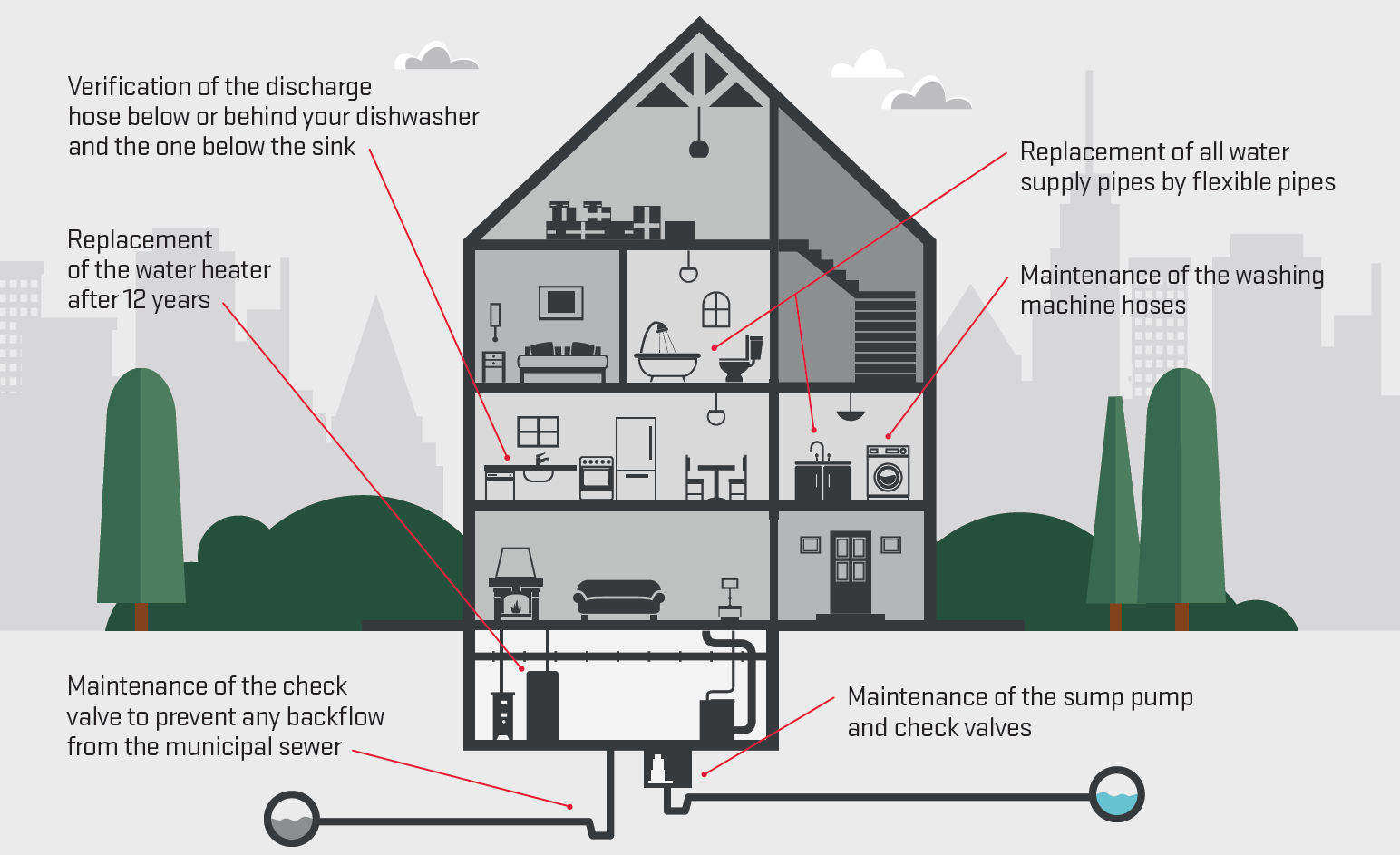Did you know that water damage is the most common home insurance claim? Fortunately, some water damage claims are avoidable through attention to certain details and with a few simple steps. Here are some tips and tricks that will help you protect your home!

SUMP PUMPS
A sump pump collects water from a French drain before sending it into your building’s sewage-disposal system.
Maintenance
Ensure that there is no debris impeding your sump pump from doing its work, and regularly check that it is functioning, particularly after a power outage. To do so, just fill the tank with water. If the pump begins to work, and the tank empties, you’ll know that everything is working properly. If not, make sure to call a plumber immediately!
CHECK VALVES
Check valves are the key to preventing sewage backup. Such valves are located in the basement, either under a trap door or on an above-ground hose, near a sink, shower, toilet, or washing machine drain. It is critical that you maintain your check valve to prevent, at all costs, backflow from the municipal sewer from coming into your home’s sewage disposal system.
Maintenance
If you have a cast-iron valve with a bolted cover, we recommend that you call a plumber. If not, you can clean it yourself in four easy steps:
- Open the cover and remove the access plug.
- Open the valve, clean the seal ring, and ensure that it is in good condition.
- Close the valve, and make sure that the flap swings freely.
- Tightly screw the access plug back into place, and replace the cover.
That’s it! Your valve has now been cleaned. Feel free to get into the habit of repeating the steps regularly.
WASHING MACHINES AND DISHWASHERS
These two household appliances lead to a great deal of water damage home insurance claims. Thus it is important that you never leave your home while they are running.
WASHING MACHINE HOSES
We suggest that you take a good look at your washing machine hoses. Do they have cracks, or are they swollen? If so, they must be changed as soon as possible. When you replace them, it’s best to choose stainless steel braided hoses because they are a lot stronger than rubber hoses. Remember, it is recommended that you change them every 10 years and that you close the valves behind your washing machine after each use.
DISHWASHERS
We recommend that you occasionally check the discharge hose below or behind your dishwasher, as well as the one below your sink. In addition, we suggest that you frequently clean the rubber seal surrounding the door of your dishwasher to ensure that food and debris are not allowing water to escape.
WATER HEATERS
Generally, water heaters must be changed every 12 years. If your water heater were to break, it would be pretty catastrophic. Here are some signs that your water heater may need to be replaced:
- Confirm its manufacturing date, which can be found on its badge plate. You can’t rely on the date of purchase!
- Is your water muddy, or do you see deposits when you turn on your tap? It may be an internal issue.
- Do you notice an accumulation of rust on the bottom of your water heater? If so, you should plan to change your water heater in the near future.
- If you notice or feel some humidity when you look at or touch the bottom of your water heater, it is time to replace it soon!
- If the tank is leaking, even just a little bit, don’t wait!



